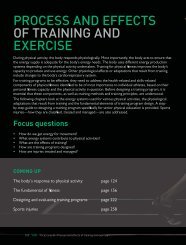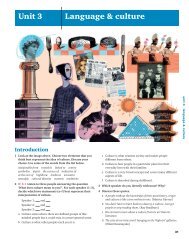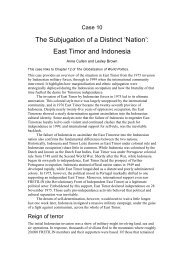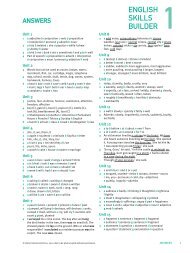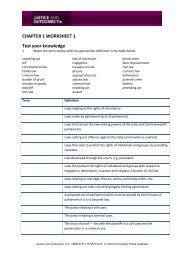You also want an ePaper? Increase the reach of your titles
YUMPU automatically turns print PDFs into web optimized ePapers that Google loves.
PDHPE Application and Inquiry<br />
298<br />
Table 16.4 A summary of the approach <strong>to</strong> an injured athlete<br />
Step Action<br />
1 Danger • Control dangers then assess injured<br />
athlete<br />
2 Life threat • Use DRABCD<br />
3 Initial injury assessment • Use STOP<br />
4 Detailed injury assessment • Use TOTAPS<br />
5 Initial management • Manage appropriately<br />
• Refer <strong>to</strong> health professional<br />
Safer Sport<br />
practical application<br />
#<br />
STOP stands for s<strong>to</strong>p,<br />
talk, observe and<br />
prevent and is a fast<br />
on-field assessment.<br />
Using TOTAPS<br />
For each scenario outlined below, apply the TOTAPS procedure <strong>to</strong> determine the nature and extent of injury.<br />
Remember that medical help is <strong>to</strong> be sought when a serious injury is suspected. Prepare a table such as the one below,<br />
and complete it.<br />
• Scenario 1: A hockey player goes in for a tackle and is involved in a heavy collision with another player.<br />
The player remains on the ground in intense pain, grasping the lower leg.<br />
•<br />
Scenario 2: At a cross-country event, a participant cannot continue and is in obvious discomfort with a leg injury.<br />
• Scenario 3: At a game of rugby union, a player remains lying on the ground after a ruck. The player is conscious<br />
and complains of pain in the spinal region.<br />
Scenario 4: You arrive at the scene of a cycling accident. The cyclist is attempting <strong>to</strong> remount the bike and<br />
• continue the race, but has severely limited movement in one arm.<br />
•<br />
Scenario 5: A 100-metre hurdler pulls up in the middle of the race and grasps his or her knee.<br />
Step Scenario 1 Scenario 2 Scenario 3 Scenario 4 Scenario 5<br />
Talk: What questions would you ask the injured<br />
person?<br />
Observe: What are some of the <strong>injuries</strong> you would<br />
be looking for?<br />
Touch: Would you <strong>to</strong>uch the injury? If so, how?<br />
Active movement: What things would you look for as<br />
the casualty moves the injury?<br />
Passive movement: Would you move the injured part?<br />
If so, how?<br />
Skills test: What skills would you require the athlete<br />
<strong>to</strong> perform?<br />
Research and Review<br />
1 Discuss the value of following the TOTAPS procedure.<br />
2 In the <strong>to</strong>uch stage, identify what the first-aider should be feeling for.<br />
3 a Compare the differences between active movement and passive movement in the TOTAPS procedure.<br />
b Discuss why passive movement follows active movement.<br />
4 At each stage of the TOTAPS procedure, describe some signs that require you <strong>to</strong> seek immediate medical treatment.



